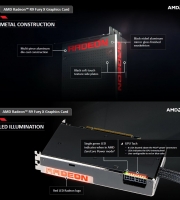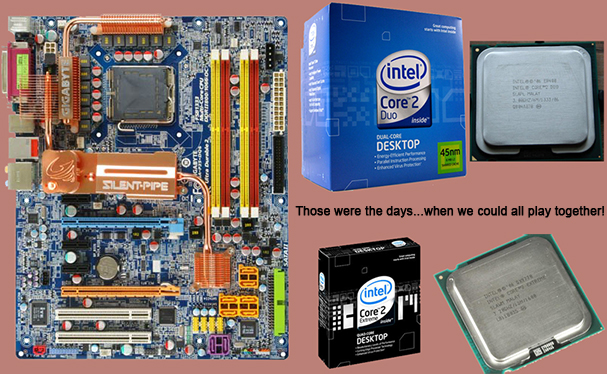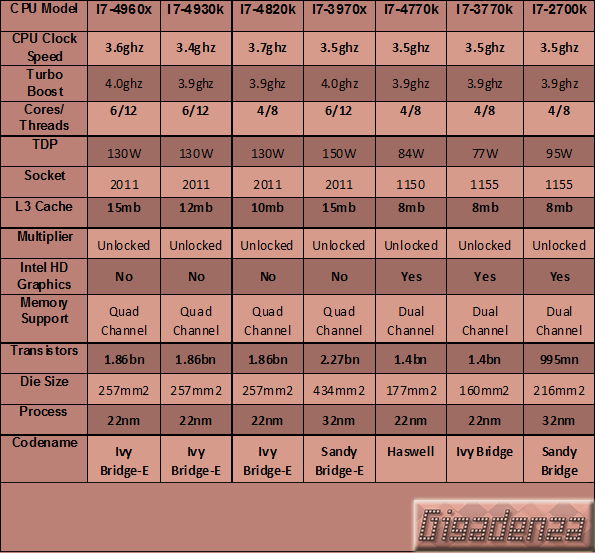


But is all now Haswell? Even a seasoned enthusiast would struggle not to admit that Intel’s rapidly expanding family tree has made 2013 an especially confusing year. Back in the days when both mainstream and high end chipsets incorporated the same socket design, choosing a new motherboard and compatible CPU was relatively straight forward and did little to inhibit the buyer’s subsequent upgrade options.
One could for example have saved a little by purchasing a board based on Intel’s P35 chipset, a product aimed at the mainstream user…initially, they could pair it up with a fast but affordable processor and later decide to replace that processor with a flagship “extreme” model, perhaps one acquired second hand, in order to realize a decent performance increase and postpone the hassle and expense of a full system overhaul.

The launch of Intel’s core i7 cycle of silicon brought with it a new custom whereby enthusiasts and main-streamers were strictly allocated separate tables and menus, aswell as being forced to dine at very different times of the day!
The saga began with the x58, an enthusiast class chipset released in late 2008, which resulted in some of the most stable yet tweakable motherboards ever assembled. Just under a year later its mainstream sibling, the P55 emerged, though in contrast to Intel’s previously released chipsets, each was based around a unique socket design (1366 for the x58 and 1156 for the P55) thus making it physically impossible for the user to play both fields. Nevertheless, of those who chose to invest in either, even early adopters seemed satisfied by the choice, price and performance offered and it could be argued that this policy of separatism initially helped to clarify rather than obfuscate.
Things remained clear enough throughout the subsequent era, but this time it was the mainstream user who was given priority. The p67 and H67 chipsets revealed a new socket design (1155) and a family of CPUs based on Intel’s revolutionary “Sandy Bridge” architecture. They were unleashed in early 2011 and proved a combination that yielded an exceptional level of performance for the price. As the year drew to a close, the x79 along with yet another socket (2011) and its own battalion of “Sandy Bridge -E” processors finally usurped the x58, which had enjoyed a reign of three years as Intel’s flagship platform.
In between each of these major updates, Intel also made adjustments to its core architecture and released additional CPUs for each chipset in order to improve performance and minimize energy consumption. The industry refers to Intel’s habit of “releasing and refining” as the “tick tock” cycle.
As Spring gave way to Summer in 2013, the cycle continued with a third major revision and once again, the mainstream user’s needs were met first. Another new chipset, another new socket and another new family of processors combined to form the “Haswell” generation.

At this point however, enthusiasts remain lagging in the Sandy Bridge era and the Ivy Bridge-E is intended as a direct upgrade for those with motherboards featuring the x79 chipset and a 2011 socket, though all but the very newest boards require a BIOS update prior to installation.
The three new CPUs incorporate the same ground breaking tri-gate 3D transistors as the standard Ivy Bridge chips, though in significantly greater quantity. The multiplier on each part is fully unlocked. The smaller 22mn die yields a welcome 20W reduction in power consumption and users with or considering a high end multi-GPU setup will continue to benefit from 40 PCI Express Lanes. Many were expecting at least one 8 core chip in the Ivy-E family but Intel has chosen to remain with six for the top two models and 4 for their “budget” sibling.
Whilst positives can be drawn from these processors being compatible with a chipset approaching its second birthday, the lack of any official refresh – such as the mainstream market received with the z68 and z77 – has meant that what at first were broadly considered annoying but minor shortcomings, might have developed into serious hindrances. Only two native SATA 6G ports, no native USB 3.0, no thunderbolt, no on chip graphics and hence, no quicksync, a very useful feature for accelerated video encoding.
Reception was less than stellar, as the following reviews bear out:
Maximum PC
AnandTech
Extremetech
HardOCP
HardwareCanucks
Tom’s Hardware Guide
One might well conclude that Intel’s persistent tardiness in fulfilling the dreams of loyal enthusiasts is now beginning to tarnish its tradition of catering to each market so precisely.
In fairness to Intel, their naming convention has remained consistent. But delaying the release of the Ivybridge-E, ostesibly to coincide with the launch of its 8 and 12 core Xeon cousins, has resulted in a confusing overlap of old and new technology for the enthusiast and mainstream and markets.
Had the Ivybridge-E made its debut at the six months earlier, the modest performance increase it offers might at least have been more aligned with expectation and greeted with less cynicism.
Without wishing to conclude on another negative, it’s impossible to ignore a deliberate and extremely ugly aberration by Intel. Having officially announced its intention to withdraw from the motherboard market at the beginning of 2013, the company also terminated all applicable technical support, software and BIOS updates with immediate effect, leaving many of its most loyal customers unable to take advantage of this, the ultimate generation of Ivy Bridge technology.
Shameless complacency in the face of limited competition would seem the only rational explanation. One can only hope that circumstances force some morals and clarity back into the equation before too long .